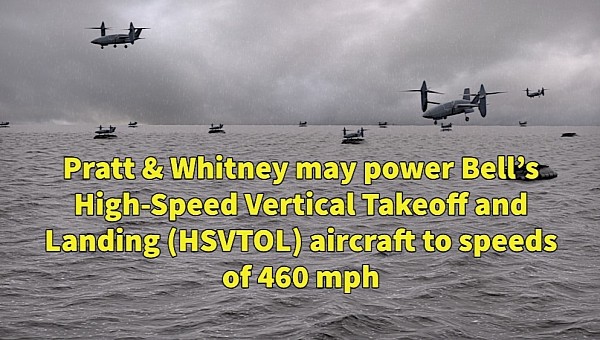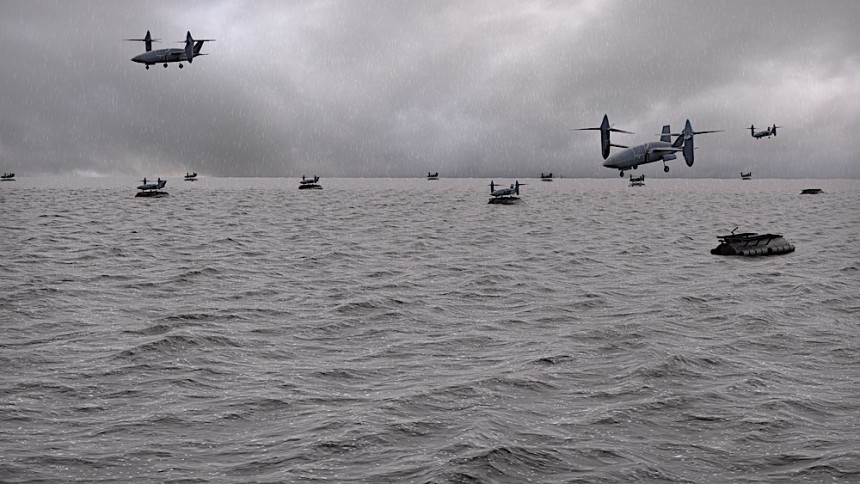The general public has come to know the concept of vertical takeoff and landing (VTOL) machines only recently, thanks to the many startups out there working on delivering new transportation solutions for the nascent urban air mobility industry. But if you really want to split hairs, the eight decades-old helicopters, with all their variations, are also VTOLs.
Much more capable at getting into tight spots than their airplane counterparts, helicopters and other kinds of VTOLs do have one major disadvantage: they’re not particularly fast. Consider this: the fastest military airplane is the Lockheed YF-12, which was capable of reaching speeds of 2,275 mph (3,661 kph). That’s close to Mach 3, and compared to the YF-12, but also other fighter jets of our era, which regularly fly well past Mach 1, helicopters are incredibly slow: the fastest one, the experimental Sikorsky X2, only reached 290 mph (460 kph). That’s almost 0.4 the speed of sound…
It's clear now, especially thanks to the advent of new types of military helicopters, that faster such machines are not only possible, but also needed. And what better company to work on such things than the one that already is responsible for two of the fastest military VTOLs out there?
Bell has been making helicopters for a long time, but of concern to us today are the V-280 Valor and 360 Invictus. The former is being developed for the U.S. Army’s Future Long-Range Assault Aircraft (FLRAA) program, after being selected as the winner last December, while the latter is part of the Army’s Future Attack Reconnaissance Aircraft (FARA) program.
They are both incredible machines in more ways than one, but one thing sets them apart from the rest of the bunch: they’re pretty fast for their kind. The Valor, for instance, will eventually be able to move at 345 mph (555 kph), while the Invictus will do the same at 230 mph (370 kph).
That’s lightning fast, compared to pretty much everything else you can find out there, but not nearly enough for Bell. Seeking to push the boundaries to what’s possible even further, the company announced over the weekend it struck a deal with Pratt & Whitney to create the needed tech for something called the High-Speed Vertical Takeoff and Landing (HSVTOL).
That would be a program the U.S. Air Force (USAF) kicked off back in 2021, which seeks to find a helicopter capable of going as fast as 460 mph (740 kph), and to potentially use it as a replacement for the current CV-22 Osprey tiltrotor.
Bell, which is just one of several companies (11 in all, to be precise) selected to take part in the program, will work with Pratt & Whitney on the engines that’ll power its HSVTOL, because that's what this latter company does best. At the time of writing there are, of course, no exact details on what engines those will be.
When ready for action, Bell’s HSVTOL will still be a tiltrotor, just like the Valor and Osprey, a choice that allows it to take off like a helicopter, but then cruise like a fighter aircraft. For all intents and purposes, it will be a multi-mission machine, with the military to use it for whatever missions, from from intelligence, surveillance and reconnaissance (ISR) to more aggressive missions, like say striking targets.
We are not told when the Bell HSVTOL will be ready (nor proposals coming from its competitors), but expect more details on the project to be spilled as work on it progresses.
It's clear now, especially thanks to the advent of new types of military helicopters, that faster such machines are not only possible, but also needed. And what better company to work on such things than the one that already is responsible for two of the fastest military VTOLs out there?
Bell has been making helicopters for a long time, but of concern to us today are the V-280 Valor and 360 Invictus. The former is being developed for the U.S. Army’s Future Long-Range Assault Aircraft (FLRAA) program, after being selected as the winner last December, while the latter is part of the Army’s Future Attack Reconnaissance Aircraft (FARA) program.
They are both incredible machines in more ways than one, but one thing sets them apart from the rest of the bunch: they’re pretty fast for their kind. The Valor, for instance, will eventually be able to move at 345 mph (555 kph), while the Invictus will do the same at 230 mph (370 kph).
That would be a program the U.S. Air Force (USAF) kicked off back in 2021, which seeks to find a helicopter capable of going as fast as 460 mph (740 kph), and to potentially use it as a replacement for the current CV-22 Osprey tiltrotor.
Bell, which is just one of several companies (11 in all, to be precise) selected to take part in the program, will work with Pratt & Whitney on the engines that’ll power its HSVTOL, because that's what this latter company does best. At the time of writing there are, of course, no exact details on what engines those will be.
When ready for action, Bell’s HSVTOL will still be a tiltrotor, just like the Valor and Osprey, a choice that allows it to take off like a helicopter, but then cruise like a fighter aircraft. For all intents and purposes, it will be a multi-mission machine, with the military to use it for whatever missions, from from intelligence, surveillance and reconnaissance (ISR) to more aggressive missions, like say striking targets.
We are not told when the Bell HSVTOL will be ready (nor proposals coming from its competitors), but expect more details on the project to be spilled as work on it progresses.












